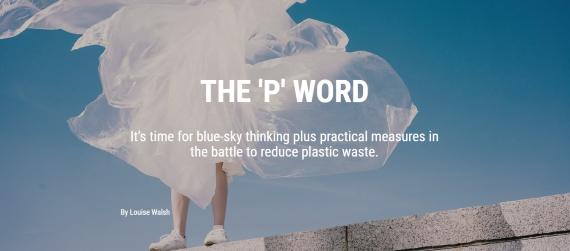
It's time for blue-sky thinking plus practical measures in the battle to reduce plastic waste.
In Tokyo, a householder consults her 60-page ‘Garbage Separation and Disposal’ system to check whether it's a recycle day for plastic bottles or for all other plastic packaging.
In a coastal village in Kenya, an order has been received for 2,000 bricks made from waste plastic and earth.
On a chemistry bench in Cambridge, bubbles of hydrogen form and rise around a thumbnail-sized square of plastic cut from a water bottle.
All around the world there are instances where we are getting things right with plastic – recycling, recovering, re-using – and instances where we are getting things very wrong.
Our awareness of just how wrong is riding the crest of a plastic-polluted wave: every year, more than 8 million tonnes of plastic waste ends up in the world’s oceans. Environmental agencies have predicted that if these trends continue, our oceans will contain more plastic than fish by 2050.
Plastic has become a malevolent symbol of our wasteful society. But it's also one of the most successful materials ever invented: it’s cheap, durable, flexible, waterproof, versatile and lightweight. It’s fundamental to almost every aspect of our lives and it's a resource that we are wasting, says Professor Erwin Reisner.
Read the full University of Cambridge article...
Learn more about The Cambridge Creative Circular Plastics Centre (CirPlas) here.
Image credit: Sky girl: Karina Tess

